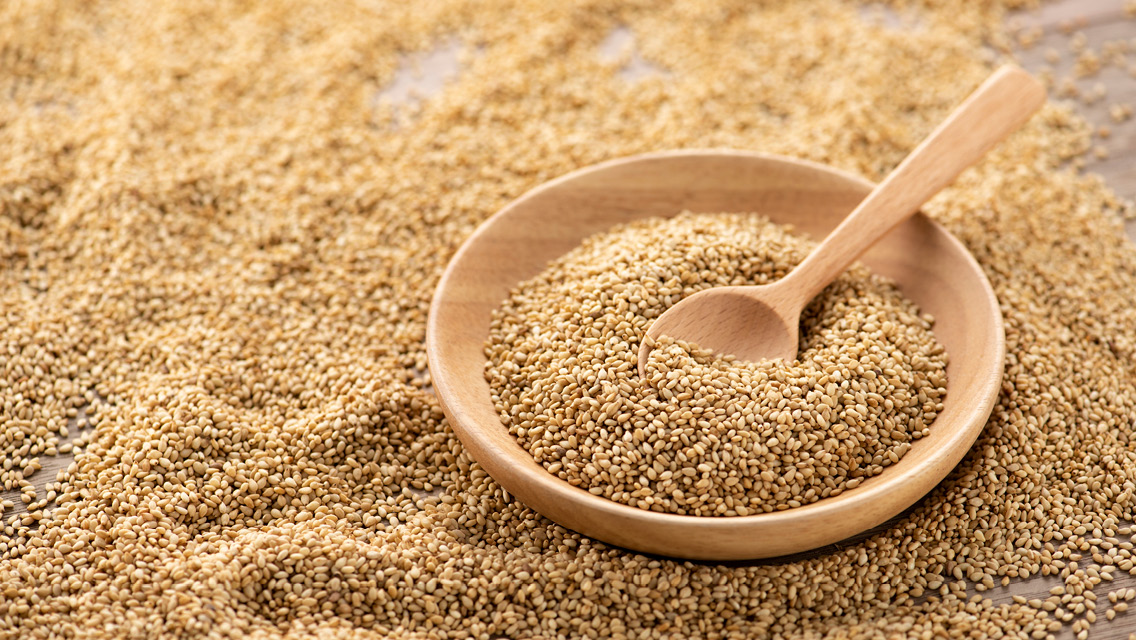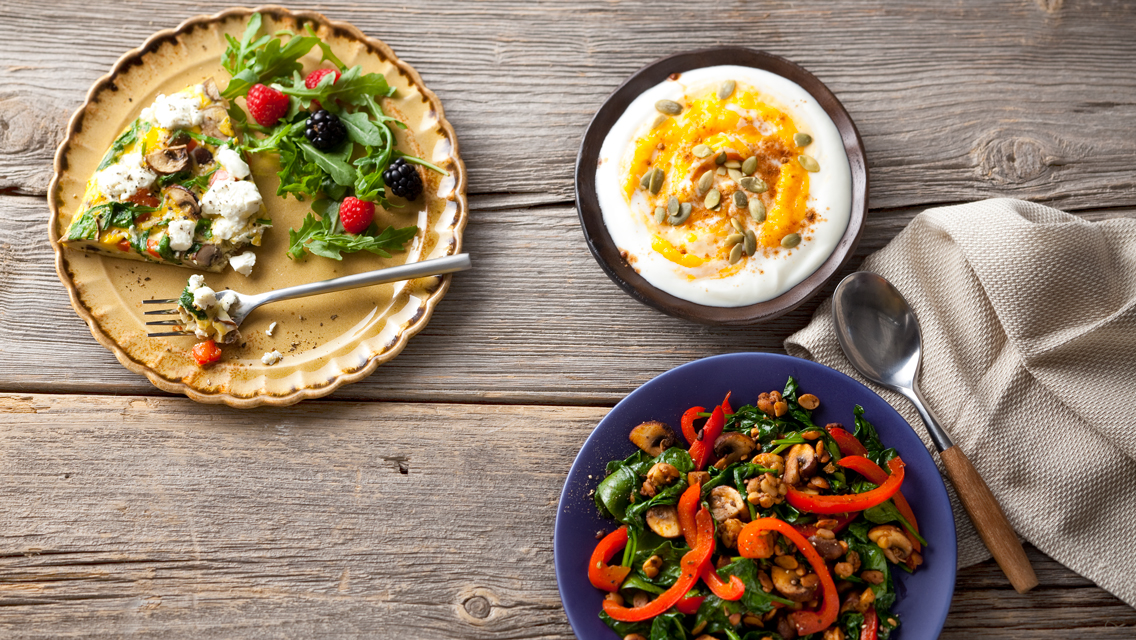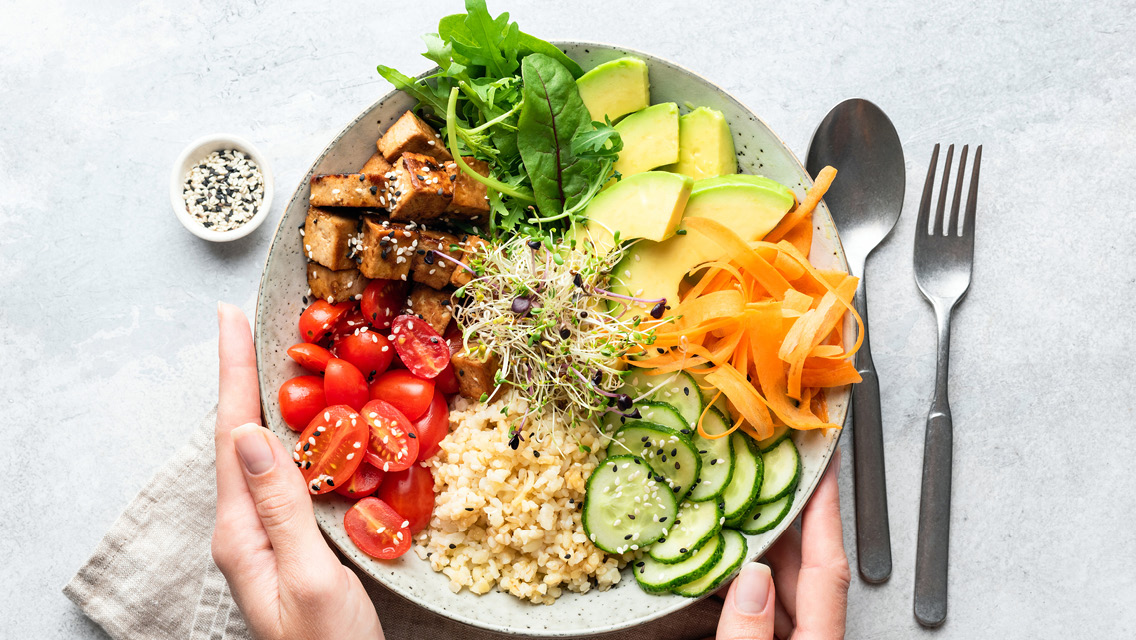You may have heard of them. You have no doubt eaten them. And if you want to lower your high cholesterol, you definitely need more of them. We’re talking about plant sterols. They’re not exactly the sexiest-sounding health nutrients out there, but getting friendlier with them now can influence your health today and for decades to come.
Research has shown a direct line between plant sterols and lowering LDL, or “bad,” cholesterol. Studies have also indicated that increasing your intake of plant sterols may help battle three of the most common types of cancer. And there are definitely enough sterols to go around – food chemists have discovered how to make an almost infinite variety of sterol-fortified foods, the result of which has been a spate of products eagerly advertising their cholesterol-lowering abilities.
Before you decide to leap aboard the plant-sterols bandwagon, though, you may have a few questions. For example:
- Are the cholesterol claims really legitimate?
- Are there any negative health consequences associated with eating too many sterols?
- Is there a better way to get them than in fortified foods?
- And perhaps the more important question: What the heck are plant sterols, anyway?
What’s Are Plant Sterols?
Plant sterols are constituents of plants – plant cell walls, to be exact.
They are more or less the plant equivalent of the cholesterol found in animals and they help to form cell membranes in plants, explains Joseph Judd, PhD, a research chemist with the Human Nutrition Research Center in Maryland.
There are different types of sterols – along with a variety of plant stanols, which are close cousins and play a similar role – but they all have a similar chemical structure. Every plant you eat (fruits, vegetables, nuts, seeds, grains, legumes) contains small amounts of sterols, but they are most concentrated in plant oils, such as corn oil, cotton oil and sesame oil.
Plant sterols are far from “new.” They were discovered in 1922, and since the 1950s, scientists have known that plant sterols can reduce LDL cholesterol in both animals and humans. Because plant sterols are chemically similar to cholesterol molecules, they are able to block cholesterol absorption by the intestines, thereby lowering the amount of LDL in the blood.
This effect is noteworthy because there is strong evidence of a correlation between high LDL-cholesterol levels and the risk of cardiovascular disease. Of course other factors also play a role, such as obesity, smoking and heredity, among others, but keeping your LDL cholesterol in check is nonetheless a good health move.
In adults, LDL-cholesterol levels of 190 mg/dL and higher are considered very high risk, according to the American Heart Association, while levels from 160 to 189 mg/dL are regarded as high and 130 to 159 mg/dL as borderline-high. High LDL levels mean you have more cholesterol in your blood than your body needs. “When there are too many LDL-cholesterol particles in the bloodstream, they can become trapped in the inner lining of the blood vessels, then damaged by free radicals,” explains Kim Brown, RD, a nutritionist in San Diego.
But are plant sterols really that great at controlling cholesterol levels? It turns out that a flurry of well-documented studies in the past decade have repeatedly shown plant sterols have stood up against tough scientific scrutiny.
The most surprising aspect of plant-sterols’ effect on cholesterol, though, is that they seem to work on everyone, regardless of their cholesterol profile or any other factor.
“There are consistent data to support a significant LDL, or ‘bad,’ cholesterol lowering of about 10 percent,” says Alice Lichtenstein, DSc, a professor of nutrition science and policy, Friedman School, Tufts University. That’s enough to lower one’s risk of heart disease by about 30 percent.
The most surprising aspect of plant-sterols’ effect on cholesterol, though, is that they seem to work on everyone, regardless of their cholesterol profile or any other factor. “In one study, we had 53 people and every one of them had some lowering,” says Judd. “You just don’t see that in experimental studies. There are almost always some people who don’t respond.”
If plant sterols come with a catch, though, it’s that they seem to be most effective in dosages of 1 to 2 grams (1,000–2,000 milligrams [mg]) per day. That amount is based on the large number of studies that tested the effectiveness of various dosages; less than 1 gram per day did not produce significant effects, while dosages exceeding 2 grams daily were no better than the lower doses.
To put those 1 to 2 grams in perspective, the average American gets a paltry 80 mg of plant sterols per day, according to Udo Erasmus, PhD, author of Choosing Healthy Fats. The most sterol-rich diet in the world traditional Asian diets – contains approximately 400 mg. Even a typical vegetarian diet only brings in about 345 mg per day.
So, says Judd, “you can’t even come close” to consuming enough plant sterols to have a significant impact on your LDL cholesterol through natural foods alone. Of course, you could just double your intake of plant sterols in the form of more food, but that might mean taking in excess calories, which could offset the benefits.
How to Consume Enough Sterols
Plants contain only small amounts of sterols, and you need quite a bit on a daily basis for them to be effective in fighting cholesterol. Does that mean that it’s impossible to get enough plant sterols? Not exactly.
Experts say that consuming more sterols in general can help you avoid high LDL cholesterol before it occurs – because in effect you are eating more fruits and vegetables and less high-fat foods – as well as help lower moderately high LDL levels.
Reaching the magic 1 to 2 grams daily is not completely out of reach either. To help consumers manage it more easily, food chemists have searched for ways to create plant-sterol supplements and foods fortified with plant sterols extracted from their natural sources. But it hasn’t been easy. The original plant-sterol studies used a crystalline extract that was both expensive and inefficient to provide as a supplement. Other early problems included taste and dissolvability.
The prospects for plant-sterol supplementation changed, though, when in 1995 the Raisio Group in Finland introduced Benecol, a margarine containing 20 percent hydrogenated sterols derived from an unlikely source: pinewood pulp. Immediately thereafter, other major food-industry players – such as Archer Daniels Midland and Cargill – began to create their own functional foods and supplements containing plant sterols.
Initially, technical limitations made it possible only to add plant sterols to fat-containing foods, such as margarines and salad dressings, but that hurdle was eventually cleared. Nowadays, you can find them in healthier fortified foods (including many that contain no trans fats) ranging from yogurt and snack bars to soymilk and orange juice, as well as in tablet and capsule form.
Almost all sterol-fortified products have some kind of cholesterol-related health claim on the packaging, or you can look for the words “plant sterols,” “phytosterols,” or “plant stanol esters” on the label. Most of these products contain enough plant sterols to provide 1 to 2 grams within two to three servings. So you can get sufficient sterols without having to overeat or radically alter your diet.
Plant Sterols vs. Statins
Plant sterols do have their limitations: They don’t seem to have enough power to take on the high-risk LDL cholesterol zone (190 mg/dL and above). People in that group who are determined to lower their cholesterol usually have to turn to LDL-lowering statin drugs, such as Zocor and Lipitor, which can reduce LDL levels by about 20 to 45 percent, depending on the dosage and drug, according to a study in the medical journal Circulation (April 2, 2002).
But while plant sterols may not be able to lead the charge, they can definitely lend a hand and help to lower LDL-cholesterol levels even faster. Plant sterols work through a different mechanism than statins. Whereas statins lower LDL by slowing cholesterol production and increasing cholesterol removal in the liver, plant sterols actually prevent the absorption of cholesterol through the stomach. So by combining the use of a statin with daily plant-sterol supplementation (either through food or tablet), you can achieve a greater total reduction in LDL.
Alternatively, cholesterol patients can also use plant-sterol supplementation to reduce the dependency for prescription medication. “I believe in lowering the dosage of the drugs as much as you possibly can,” says Judd. This is because statins carry the risk of several side effects, such as upset stomach, muscle pain and liver damage. “Plant sterols, though, have no known side effects beyond slightly lowering the absorption of fat-soluble compounds, specifically carotene and vitamin E,” adds Judd.
Lichtenstein cautions, though, that patients using cholesterol medications should consult their doctor before initiating a plant-sterols regimen. “Also, you can’t use plant sterols instead of doing all the other stuff you should be doing to lower cholesterol, like consuming a healthy, balanced diet that’s low in trans fats, maintaining a healthy body weight and getting regular exercise,” she says. “In other words, it’s not an easy way out.”
Concerns and Considerations
Are there any negative health consequences associated with heavy consumption of plant sterols?
To date, the only problem scientists have identified is the aforementioned absorption of carotene and vitamin E, “but if you’re getting plenty of these nutrients in your diet, the effect is not biologically significant,” says Judd. However, because infants, children, and pregnant or lactating women are more sensitive to changes in carotene levels, they are advised to avoid plant-sterol-enriched products.
Then there is the somewhat offbeat question of whether you can actually lower your cholesterol too much. After all, cholesterol, despite all its negative press, does play an important role in the body by helping to produce hormones and parts of your cells.
Most experts say that excessive lowering isn’t really possible, as the body will synthesize more cholesterol when stores dip too low. “When you’re not getting enough from your stomach or your diet, your body will turn on cholesterol synthesis,” says Judd. In fact, the cholesterol-lowering effect of plant sterols has been found to plateau at dosage levels exceeding 2 grams per day. In other words, plant sterols do their job and then call it quits.
Of course, not everyone agrees that plant sterols are entirely blemish-free. Some point to the 2 grams daily as a potential red flag. Udo Erasmus, for one, is among those who worry that, over time, 2 grams a day could lead to as-yet-unforeseen health problems, because plant sterols are not recognized as a nutrient by the human body. Although only 3 to 5 percent of the plant sterols that are consumed are taken into the bloodstream, “who knows what happens when they are absorbed, because if they are not molecules that belong in the body, you could have a problem,” says Erasmus.
Existing research on the effects of extensively absorbed plant sterols suggests that instead of triggering health problems, they may actually generate substantial health benefits unrelated to cholesterol.
Yet the existing research on the effects of extensively absorbed plant sterols suggests that instead of triggering health problems, they may actually generate substantial health benefits unrelated to cholesterol. Studies conducted by Atif Awad, PhD, and colleagues at the University of Buffalo, N.Y., have discovered that a diet rich in plant sterols can inhibit the development of breast, colon and prostate cancers – the three most common types in Western society. It can also reduce the growth and spread of existing cancers.
Awad agrees with the premise that the body sees plant sterols as a foreign substance, but, ironically, the very foreignness of plant sterols might be the source of their cancer-fighting properties. “They affect the communication of the external stimuli to the tumor cells. By doing that, they produce molecules to kill the cancer cells,” says Awad. “Normal cells will not be influenced. They’re very unique in that sense.”
The level of plant-sterol consumption needed for anti-cancer benefits is much smaller than the level needed for significant cholesterol reduction. In Awad’s studies on both humans and mice, he found that the subjects simply had to replace some animal food in their diet with plant foods.
The benefits of plant sterols may also stretch to the immune system. A South African researcher has produced several studies demonstrating that plant sterols may strengthen the immune system and thus may become a future treatment to combat the HIV virus. These studies, though, are in the early stages and have not been confirmed by other scientists.
Plant sterols, though, have already passed the most important test – if you need to lower your LDL cholesterol, or just keep it in check, then sterols are the real deal.
How to Eat More Sterols
There are three ways to get plant sterols into your body: through natural foods, functional foods and supplements. Each has its pros and cons.
Natural Foods
- Examples: Sesame seeds, peanuts, soybeans, corn oil
- Pros: Most nutrition experts agree that it’s best to get any desired nutrient in its natural context. Natural foods are rich in plant sterols and are packed with many other valuable nutrients, like protein and certain vitamins. For example, 1 ounce of sesame seeds contains about 200 mg of plant sterols.
- Cons: In order to get 1 to 2 grams of plant sterols (the amount needed for significant LDL-cholesterol reduction) from natural foods, you’d have to consume a lot of calories and a lot of fat.
- Best for: Those who do not currently have high LDL cholesterol. If you’re already eating right and exercising regularly, slightly increasing your daily intake of natural foods rich in plant sterols can further decrease the likelihood that you will ever have high cholesterol. It can also reduce your risk of breast, prostate or colon cancer.
Functional Foods
- Examples: Minute Maid Premium HeartWise orange juice, Take Control spread
- Pros: Foods fortified with plant sterols allow you to get the recommended 1 to 2 grams for lowering LDL cholesterol without doing anything more than changing your brand of orange juice or margarine.
- Cons: Fortified foods are a bit more expensive than their conventional counterparts. Also, it may not be easy to get a consistent dosage, particularly if you fail to include these foods in your diet every day.
- Best for: People who prefer getting their sterols from everyday items and don’t mind spending a bit more for them.
Supplements
- Examples: Benecol SoftGels, Cholest-Off
- Pros: Plant-sterol supplements represent a convenient way of consuming measured amounts of plant sterols/stanols. For example, two Benecol SoftGel capsules supply 1.1 grams of plant stanols.
- Cons: The cost of maintaining a consistent plant-sterols-supplementation regimen is about $1 per day.
- Best for: Patients who have high LDL-cholesterol levels (190 mg/dL and above) and who have obtained approval from their physician to take a plant-sterol supplement.




This Post Has 0 Comments